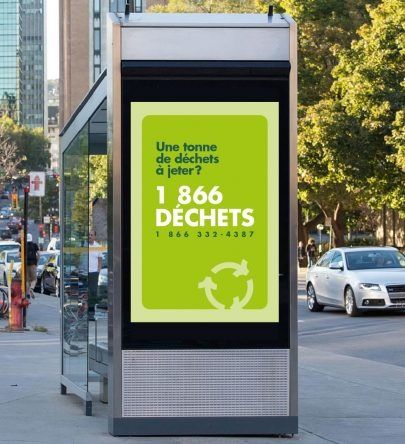During an intense heat wave, the temptation is great to turn on your air conditioner to enjoy a bit of coolness, or to get one. But at what cost to the environment?
Published at 1:40 a.m.
Updated at 5:00 a.m.
“If we tightened the screws on air conditioners, how much CO2 “wouldn’t go into the clouds?” asks Jacques Mercure.
Every summer in Quebec, sales of air conditioners explode. Nearly two-thirds of Quebec households own one today, compared to 54% in 2013, according to Statistics Canada.
But despite the saving coolness they provide, air conditioners are not unanimously accepted. “It’s an unfortunate debate,” admits the Dr Stéphane Perron, from the National Institute of Public Health of Quebec (INSPQ).
We are really caught between health, comfort and environment.
The Dr Stéphane Perron, from the National Institute of Public Health of Quebec
Good for health
In terms of health, numerous studies conducted around the world have shown that air conditioners save lives every year. They reduce the risk of mortality and heat-related health problems, confirms a report published in 2022 by the INSPQ.
In addition, air conditioning helps reduce exposure to contaminants (chemical compounds, spores, mold, pollen) from outside, provided that the windows are kept closed during use, that the air is ventilated at the same time and that the unit is properly maintained – particularly its filter.
Note, however, that an air conditioner set at too low a temperature can have the opposite effect. Torticollis, headache, allergic symptoms, dryness of the mucous membranes, thermal shock, cardiovascular problems: when the device is set to less than 20°C, the health risks multiply.
Energy hungry
Air conditioners also raise several environmental issues.
According to data from Natural Resources Canada, in about twenty years, energy consumption used to air condition homes has almost doubled – because although new devices are more efficient, more and more households are purchasing them.
According to Hydro-Québec’s calculator, central air conditioning from the 1990s with a capacity of two tons consumes more than 1,500 kWh during the summer. This corresponds to the added consumption of an electric stove, a dishwasher and a dryer over one year. But newer air conditioning can consume around half as much.
Calculate your air conditioner consumption on the Hydro-Québec website
A story of gas
Air conditioners pose another challenge: recycling them. They contain a refrigerant gas – just like refrigerators – which circulates in a closed circuit and cools the air. The most dangerous gases, chlorofluorocarbons (CFCs), were banned in 1985 thanks to the Montreal Protocol. They have since been replaced by others, whose environmental impact is lesser, but not negligible.
The problem is that when an air conditioner reaches the end of its life, we tend to leave it on the sidewalk. It can then end up in the dump or be picked up by metal dealers who do not necessarily know how to deal with these gases. These often end up escaping into the atmosphere.
“If we leave our air conditioner in the street, all the efforts we make for the environment on a daily basis can be cancelled out by this action,” summarizes Jules Foisy Lapointe, general director of GoRecycle.
1 tonne
Average amount of CO equivalent2 saved thanks to the recycling of an air conditioner in Quebec
57.1 billion tonnes
Amount of CO equivalent2 which would be saved over 30 years, on a global scale, if air conditioners were better managed
Sources : Projet Drawdown, GoRecycle
Mr. Foisy recommends taking your old air conditioner to a GoRecycle collection point, the only organization recognized by Recyc-Québec to ensure the recycling of this type of device, so that these gases are treated and disposed of correctly. Currently, the organization estimates that it manages to recover and recycle less than 2 out of 10 air conditioners thrown away in Quebec.
Heat islands…even hotter
Last but not least, you may have felt a warm breeze in an alley where air conditioners line the exterior facade of buildings.
In an article published in 2020 in the journal Environmental Research Letters, French researchers showed that, during a heatwave that hit France in 2003, air conditioning helped warm the streets of Paris and its suburbs. Because of this hot air released outside, some neighborhoods saw the mercury rise up to 3.6°C higher than if there had been no air conditioners.
For Florent Barbecot, professor in the Department of Earth and Atmospheric Sciences at the University of Quebec in Montreal, this is the heart of the problem.
When we use an air conditioner, it makes noise and brings heat to the street, so our neighbors will get it too. It’s a real vicious circle.
Florent Barbecot, professor in the Department of Earth and Atmospheric Sciences at UQAM
He emphasizes that this also raises a question of social justice, since it is in disadvantaged neighborhoods that people own less, live in less well-insulated buildings and therefore suffer the most from the heat.
A question of moderation
Several alternative solutions were proposed by the experts interviewed by The Presssuch as improving the insulation of buildings or creating more green spaces.
“The leaves of trees work like mini air conditioners,” says Florent Barbecot. Except that a tree has no negative environmental impact, it’s free and it brings well-being. »
But in the short term, the most effective solution to cope with heat waves remains to use an air conditioner in moderation – the Dr Stéphane Perron suggests choosing a temperature between 22 and 26°C. This advice is not limited to individuals: around the world, many companies and institutions are committed to being more flexible with air conditioning.
“As climate change progresses, unfortunately, air conditioners are going to be more and more essential. The goal is to try to use them intelligently,” he says.
Read the article “Energy sobriety: museums are rethinking their air conditioning standards”
Figure of the week
PHOTO TAKEN FROM PLANTCARB WEBSITE
Danish researchers have succeeded in creating a new bioplastic, which is 100% biodegradable and compostable.
100 %
Danish researchers have managed to create a new bioplastic that is said to be 100% biodegradable and compostable. Made from starch – found in wheat, corn, barley and potatoes, among others – it is strong, stretchable and, according to them, decomposes in just two months. It could, for example, replace the plastic film used to wrap food. The scientists have founded a company (called plantCarb), obtained a patent and are now looking for partners to commercialise their invention on a large scale. Attention all enthusiasts!
Green light

PHOTO TAKEN FROM THE RECYC-QUÉBEC SITE
L’application Where is it going? lets you know how to dispose of your moving waste.
Recyc-Québec encourages people to reduce their moving waste
“A ton of waste to throw away? 1 866 WASTE (1 866 332-4387)”. Perhaps you have seen these large green posters plastered all over Montreal in recent days. By calling this number, you receive a message from Recyc-Québec: “This voicemail box is full. Just like the majority of landfills on the planet. » The organization then offers to download its application Where is it going? to find out how to dispose of your moving waste.
He said
PHOTO TAKEN FROM THE REWILDING EUROPE WEBSITE
Dan Calderon, hydrobiologist at the Swedish Fishermen’s Association
Having the chance to reintroduce a species that has become nationally extinct is a gift.
Dan Calderon, a hydrobiologist with the Swedish Fishermen’s Association, when he released about a hundred young black sturgeon from Germany into the Göta älv River on June 18. The species had disappeared from the river a century ago due to overfishing and poor water quality. (Source: AFP)
Ask your questions about the issues linked to the ecological transition








